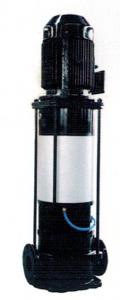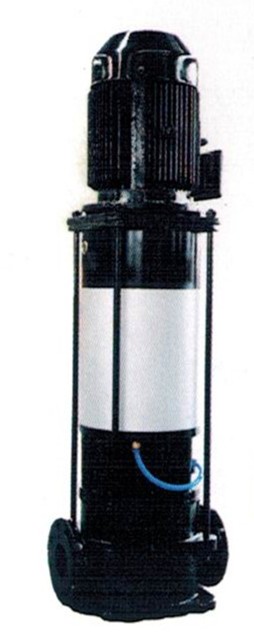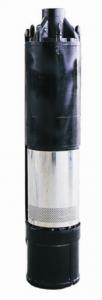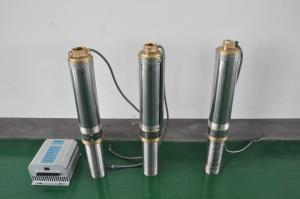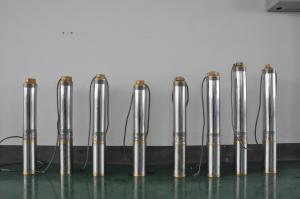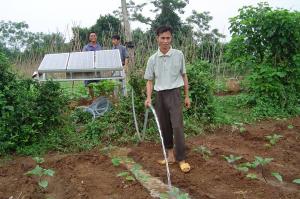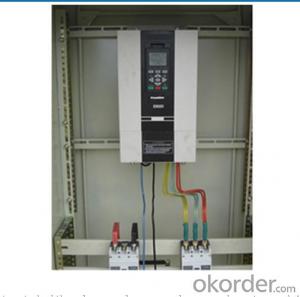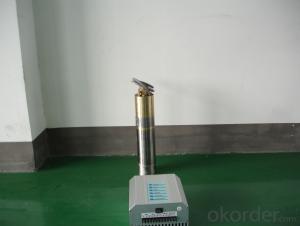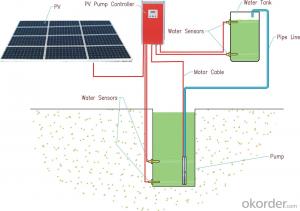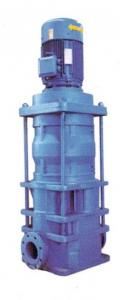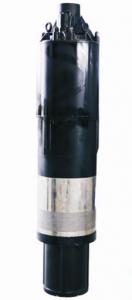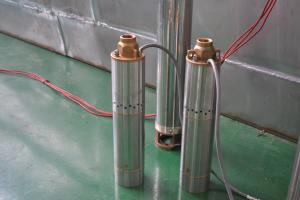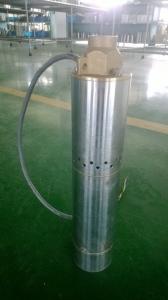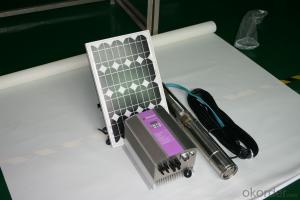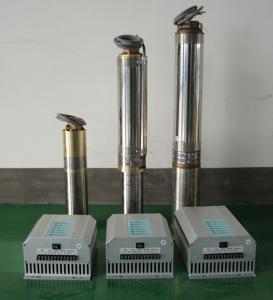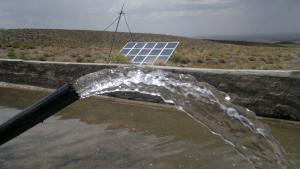Taco Solar Pump L3D-07-250
- Loading Port:
- China Main Port
- Payment Terms:
- TT OR LC
- Min Order Qty:
- -
- Supply Capability:
- 300 sets /month
OKorder Service Pledge
OKorder Financial Service
You Might Also Like
Product description:
Product: Solar water pump
Model:L3D-07-250
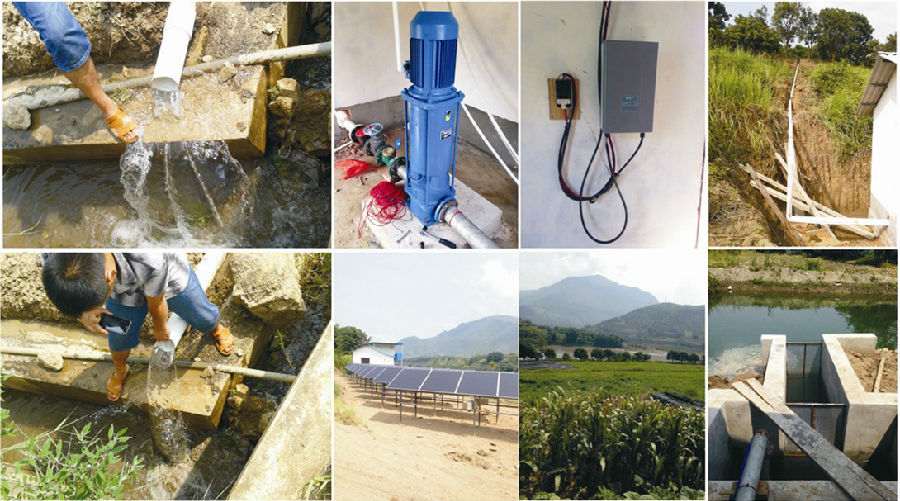
Appilication:
surface pump
for surface water of pond, river, lake
for irrigation of a big farm with 4000 m2 on the top of a high mountain
Product specification:
flow rate:7m3/ hour, 56m3/day.
lift: 10m-250m
pump diameter: 296mm
Pump installed on the ground, outlet to the water surface:4m
with AC motor, motor power:5.5kW
but only need solar power:5.2kW(while Grundfos pump needs at least 18.5kW solar power, our pump can save more than 70% solar panel power,save USD8000 cost for solar panel per set.
Material:
Pump inside: stainless steel and wearable nylon,it enables our solar pump to have 10 years sevice life.
Motor : AC motor, 380V , three phase , 50Hz. The pump also can connect with grid power directly.
Certification:
3 International patent
ISO9001
CE
Warranty:2 years
- Q: How does a solar pump handle water with high levels of dissolved gases or odors?
- A solar pump is not specifically designed to handle water with high levels of dissolved gases or odors. However, in general, the pump's primary function is to transport water, regardless of its quality. If the water has high levels of dissolved gases or odors, the pump will still be able to move the water from one place to another. However, it is important to note that the pump itself will not remove or treat the dissolved gases or odors in the water. Additional treatment or filtration may be required to address these issues.
- Q: Can a solar pump be used for water supply in military or defense operations?
- Yes, a solar pump can be used for water supply in military or defense operations. Solar pumps are a reliable and sustainable option for remote locations where access to electricity may be limited. They can provide a continuous water supply, reducing the reliance on traditional fuel-powered pumps and minimizing logistical challenges. Additionally, solar pumps are quiet, which can be advantageous in military operations where noise reduction is crucial.
- Q: What are the components of a solar pump system?
- The components of a solar pump system typically include solar panels, a controller, a pump, a storage tank or reservoir, and a distribution network (pipes or hoses) for the water.
- Q: Can a solar pump be used for water supply in off-grid schools?
- Yes, a solar pump can be used for water supply in off-grid schools. Solar pumps are a sustainable and cost-effective solution for remote locations without access to electricity. They can harness solar energy to power the pump and provide a reliable water supply for the school, ensuring access to clean water for the students and staff.
- Q: Can a solar pump be used in areas with high salinity in water?
- Yes, a solar pump can be used in areas with high salinity in water. Solar pumps are commonly designed to handle various water conditions, including high salinity. They are equipped with materials that are resistant to corrosion and can effectively operate in saline water environments. Additionally, solar pumps are often used in remote areas where access to electricity is limited, making them a suitable and sustainable solution for pumping water in high salinity areas.
- Q: What is the maximum operating pressure of a solar pump?
- The maximum operating pressure of a solar pump varies depending on the specific model and manufacturer. However, in general, most solar pumps have a maximum operating pressure ranging from 100 to 150 pounds per square inch (psi).
- Q: Do solar pumps require any special permits or approvals for installation?
- Yes, in most cases, solar pumps require permits or approvals for installation. The specific requirements may vary depending on local regulations and the size of the pump system. It is advisable to check with the local authorities or consult with a professional installer to ensure compliance with all necessary permits and approvals.
- Q: How does a solar pump handle water source contamination from oil spills?
- A solar pump does not directly handle water source contamination from oil spills. However, it can be used to pump clean water from an unaffected source to the affected area, helping to dilute and disperse the oil spill. Additionally, solar-powered technologies can also be used in conjunction with other oil spill cleanup methods such as skimmers and booms to aid in the removal of oil from the water.
- Q: What is the expected energy efficiency of a solar pump system?
- The energy efficiency of a solar pump system can vary depending on several factors. Typically, a well-designed and properly installed system can achieve an energy efficiency of around 60% to 70%. However, it is important to note that this percentage may change depending on the specific design, components, operating conditions, and maintenance practices of the system. Solar pump systems consist of photovoltaic (PV) panels, a motor, and a pump. The PV panels convert sunlight into electricity, which powers the motor that drives the pump. To determine the overall energy efficiency of the system, the efficiency of the PV panels is a crucial factor. High-quality panels with efficient conversion rates can significantly improve the energy efficiency of the system. Other factors that can impact the energy efficiency include the type and size of the pump, the distance and height that water needs to be pumped, and the overall design of the system. To optimize energy efficiency, it is important to select a pump that meets the specific requirements of the application. Additionally, proper sizing and design of the system can minimize energy losses and maximize efficiency. Regular maintenance and monitoring are also essential for maintaining the efficiency of a solar pump system. This includes cleaning the PV panels to remove dust and debris, checking for leaks or faults in the system, and ensuring the panels are properly aligned for optimal exposure to sunlight. In conclusion, achieving the highest possible energy efficiency in a solar pump system involves considering various factors such as PV panel efficiency, pump selection, system design, and maintenance practices. While the expected efficiency range is 60% to 70%, optimizing these factors can help improve the overall efficiency of the system.
- Q: What is the required maintenance for the pump controller?
- The required maintenance for a pump controller typically includes regular inspection and cleaning of the controller unit, checking and tightening any loose connections, ensuring proper electrical grounding, and monitoring for any signs of wear or damage. It is also important to regularly test the pump controller's functionality and performance, and to promptly address any issues or malfunctions that may arise.
Send your message to us
Taco Solar Pump L3D-07-250
- Loading Port:
- China Main Port
- Payment Terms:
- TT OR LC
- Min Order Qty:
- -
- Supply Capability:
- 300 sets /month
OKorder Service Pledge
OKorder Financial Service
Similar products
Hot products
Hot Searches
Related keywords
